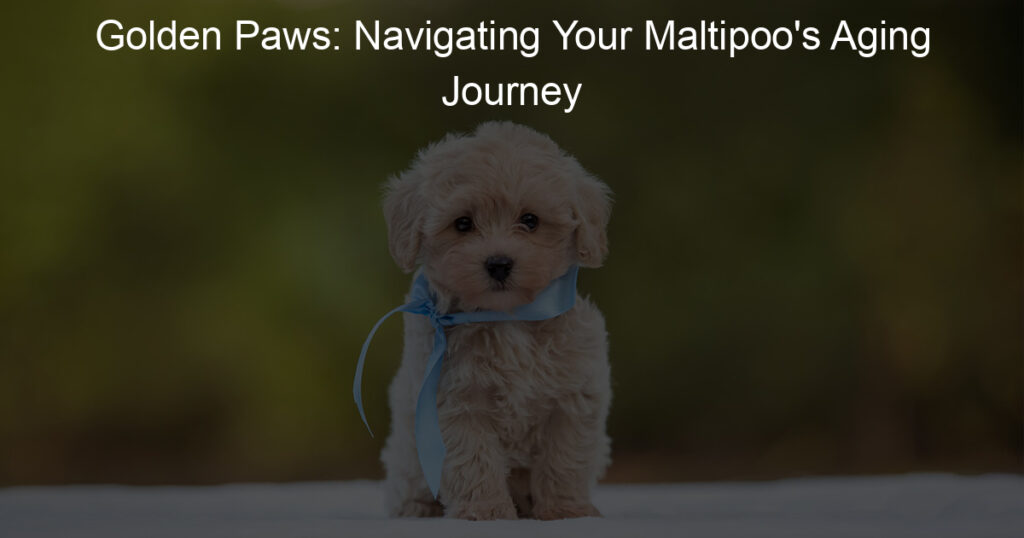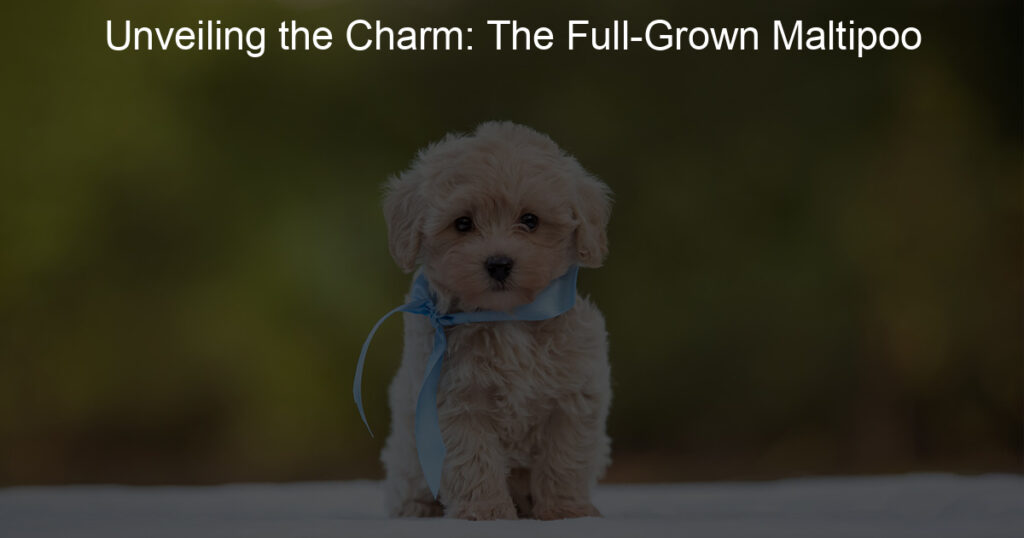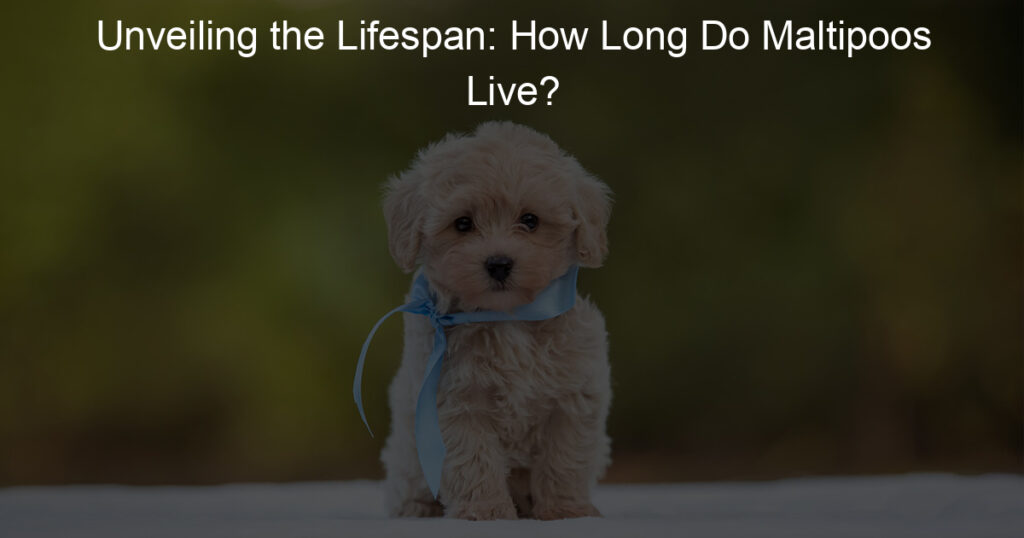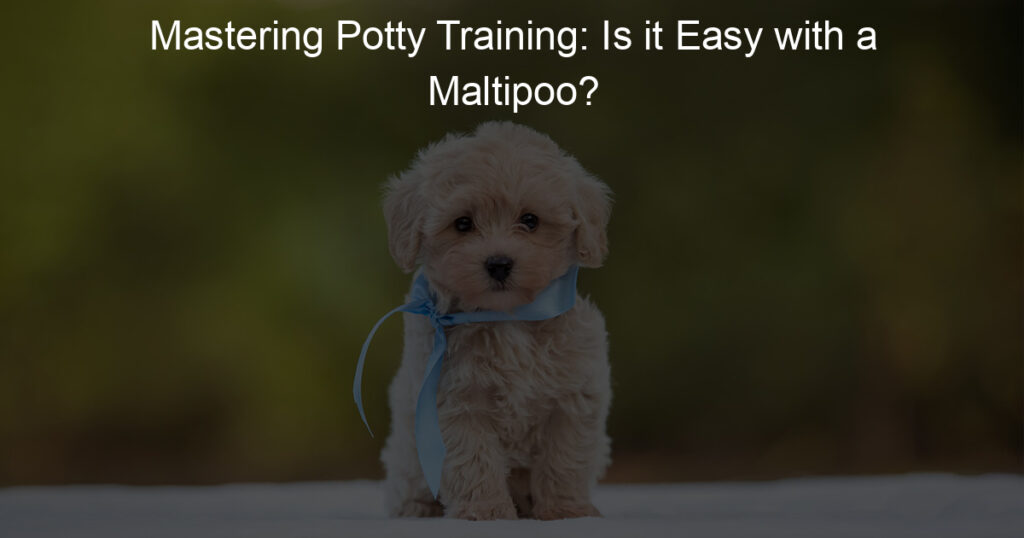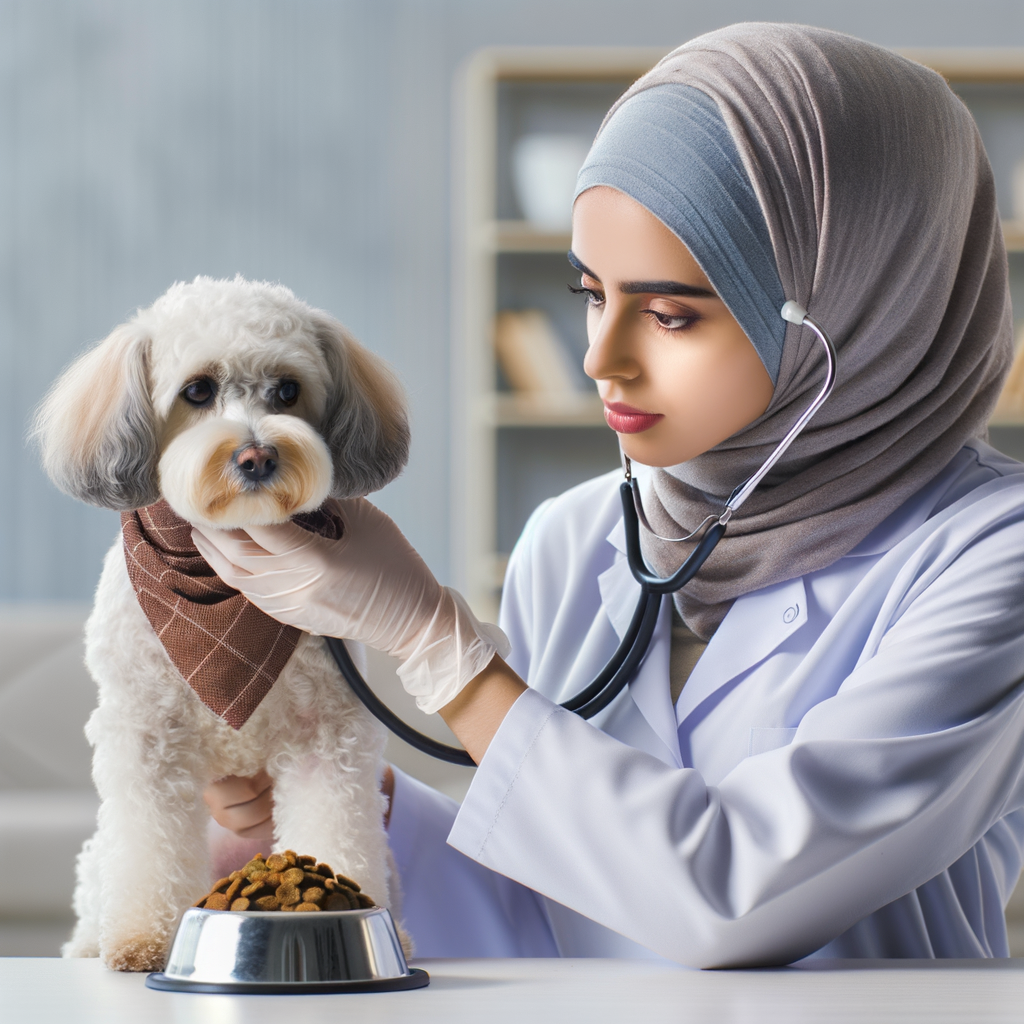
Understanding the Maltipoo Lifespan
When it comes to our furry friends, we always wish they could stay with us forever. However, just like humans, dogs also have a lifespan. In this section, we will delve into understanding the typical lifespan of a Maltipoo, a popular breed known for its adorable looks and friendly nature, and the factors that can influence it.
- Typical lifespan of a Maltipoo
The Maltipoo, a delightful mix of Maltese and Toy or Miniature Poodle, typically lives between 10 to 15 years. This lifespan is a general estimate and can vary based on several factors, which we will discuss later. However, with proper care, regular check-ups, and a healthy lifestyle, some Maltipoos have been known to live up to 16 years or more.
| Age of Maltipoo | Life Stage |
|---|---|
| 0-1 years | Puppy |
| 1-7 years | Adult |
| 8-10 years | Senior |
| 10+ years | Golden Years |
- Factors that influence a Maltipoo’s lifespan
Several factors can influence the lifespan of a Maltipoo. These include genetics, diet, exercise, and overall health care. Let’s break down each of these factors:
- Genetics: Just like humans, dogs can inherit certain health conditions from their parents. Regular vet check-ups can help identify and manage these conditions early.
- Diet: A balanced diet is crucial for a Maltipoo’s health. High-quality dog food, rich in essential nutrients, can contribute to a longer, healthier life.
- Exercise: Regular physical activity helps maintain a healthy weight and keeps the heart healthy, contributing to a longer lifespan.
- Health Care: Regular vet visits, vaccinations, and preventive care can help catch health issues early and increase a Maltipoo’s lifespan.
In conclusion, while the typical lifespan of a Maltipoo is 10 to 15 years, this can be influenced by several factors. By understanding these factors, you can take steps to ensure your Maltipoo lives a long, healthy, and happy life.
Maltipoo Senior Care
As your Maltipoo enters its golden years, it’s crucial to understand the physical changes they may undergo. This knowledge will help you provide the best care possible, ensuring your furry friend remains comfortable and happy.
Physical Changes in Aging Maltipoos
Like humans, Maltipoos experience a variety of physical changes as they age. These changes can be subtle or more noticeable, but they’re a normal part of the aging process.
- Common Physical Changes
- Maltipoo Aging Symptoms to Watch Out For
As Maltipoos age, you may notice several physical changes. Their once vibrant coat may start to gray, particularly around the muzzle and eyes. They may also gain or lose weight due to changes in metabolism. You might observe a decrease in muscle tone or a slight stiffness in their movements, which is often a sign of arthritis. Their eyes may also become cloudy, a condition known as cataracts.
While some physical changes are a normal part of aging, others may indicate health issues. It’s essential to keep an eye out for symptoms such as excessive thirst or urination, sudden weight loss or gain, difficulty moving, loss of appetite, or unusual behavior. These could be signs of conditions like diabetes, kidney disease, or arthritis. If you notice any of these symptoms, it’s best to consult with your vet immediately.
Remember, regular check-ups with your vet are crucial during your Maltipoo’s senior years. These visits can help detect any potential health issues early, allowing for prompt treatment and better management of your pet’s health.
Behavioral Changes in Aging Maltipoos
As your Maltipoo grows older, you may notice some changes in their behavior. These changes are a normal part of aging, but it’s important to understand what they are so you can provide the best care for your furry friend.
- Typical Behavioral Changes
- Increased Sleep: Older Maltipoos often sleep more than they did when they were younger. This is because their energy levels decrease as they age.
- Reduced Activity: Aging Maltipoos may not be as active or playful as they once were. They may prefer to spend more time resting or lounging around.
- Changes in Appetite: Some senior Maltipoos may eat less than they used to. This could be due to a decrease in their sense of smell or taste, or it could be a sign of a health issue.
- Confusion or Disorientation: Older Maltipoos may sometimes seem confused or disoriented, especially in new or unfamiliar environments. This could be a sign of cognitive decline, which is similar to dementia in humans.
- How to Manage Behavioral Changes
- Provide a Comfortable Environment: Make sure your Maltipoo has a comfortable place to rest and sleep. This can help them feel more secure and relaxed.
- Encourage Gentle Exercise: Even though your Maltipoo may not be as active as they once were, it’s still important for them to get some exercise. Gentle walks or play sessions can help keep them healthy and engaged.
- Monitor Their Diet: If your Maltipoo’s appetite changes, it’s important to monitor their diet and make sure they’re still getting the nutrients they need. You may need to adjust their food or feeding schedule.
- Consult Your Vet: If you notice significant changes in your Maltipoo’s behavior, it’s always a good idea to consult your vet. They can provide advice and treatment options to help manage any health issues your pet may be experiencing.
There are several typical behavioral changes you might observe in your aging Maltipoo. These can include:
While it can be difficult to see your Maltipoo aging, there are ways you can help manage these behavioral changes and ensure your pet remains comfortable and happy. Here are a few tips:
Aging Maltipoo Health Issues
As Maltipoos age, they may face certain health issues. Understanding these health problems and how to prevent them can help your furry friend live a longer, healthier life.
Common Health Problems
Let’s take a look at some of the most common health problems that elderly Maltipoos face:
- Joint Issues: Like many small breeds, Maltipoos can develop joint problems, such as arthritis, as they age. This can lead to discomfort and mobility issues.
- Dental Disease: Maltipoos are prone to dental diseases, which can lead to tooth loss and other health problems if not addressed.
- Obesity: Older Maltipoos may become less active, leading to weight gain and obesity. This can exacerbate other health issues.
- Heart Disease: Aging Maltipoos can develop heart disease, which can significantly impact their quality of life.
Now that we know what to look out for, let’s discuss how we can prevent these health issues:
- Regular Exercise: Regular, gentle exercise can help keep your Maltipoo’s joints healthy and prevent obesity.
- Dental Care: Regular brushing and dental check-ups can help prevent dental disease.
- Healthy Diet: Feeding your Maltipoo a balanced, age-appropriate diet can help maintain a healthy weight and support overall health.
- Regular Vet Check-ups: Regular vet check-ups can help catch and treat potential health issues early, before they become serious problems.
Remember, every Maltipoo is unique and may have different health needs as they age. Always consult with your vet for the best care advice for your furry friend.
Maltipoo Health Care
As a Maltipoo owner, it’s crucial to understand the importance of regular health care for your furry friend. This includes regular vet check-ups and understanding your Maltipoo’s unique health needs. Let’s delve into these two vital aspects of Maltipoo health care.
- Importance of Regular Vet Check-ups
Regular vet check-ups are essential for maintaining your Maltipoo’s health. These check-ups allow the vet to detect any potential health issues early, which can significantly improve the prognosis and treatment options. According to the American Veterinary Medical Association, adult dogs should have a check-up at least once a year, while senior dogs may require more frequent visits.
During these check-ups, the vet will typically examine your Maltipoo’s body for any abnormalities, listen to their heart and lungs, check their eyes, ears, and teeth, and may also recommend blood tests or other diagnostic tests. These comprehensive examinations help ensure your Maltipoo stays in the best possible health.
- Understanding Your Maltipoo’s Health Needs
Every breed has unique health needs, and the Maltipoo is no exception. Understanding these needs can help you provide the best care for your pet. For instance, Maltipoos are prone to certain health conditions such as patellar luxation, progressive retinal atrophy, and hip dysplasia. Being aware of these conditions can help you monitor your Maltipoo for any signs and seek veterinary care promptly if needed.
Furthermore, Maltipoos have a long lifespan, typically between 10 to 15 years. As they age, their health needs will change, and they may require a different diet, more frequent vet visits, and additional care. By understanding these needs, you can ensure your Maltipoo stays healthy and happy throughout their golden years.
Senior Maltipoo Diet
As your Maltipoo enters its golden years, it’s important to understand that its dietary needs will change. This section will guide you through these changes and provide recommendations for a senior Maltipoo diet.
Dietary Changes for Aging Maltipoos
As Maltipoos age, their metabolism slows down, and they become less active. This means that their dietary needs change as well.
- How a Maltipoo’s dietary needs change with age
- Recommended diet for senior Maltipoos
When Maltipoos are young, they need a diet high in protein to support their growth and development. However, as they age, their protein needs decrease. Instead, they require a diet that is lower in calories but still rich in nutrients. This helps to prevent weight gain and keep them healthy.
A senior Maltipoo’s diet should consist of high-quality, easily digestible proteins, a moderate amount of healthy fats, and a variety of fruits and vegetables. These provide the necessary vitamins and minerals for their health. Here is a simple table to illustrate the recommended diet:
| Food Group | Percentage |
|---|---|
| Protein | 20-25% |
| Fats | 10-15% |
| Fruits and Vegetables | 65-70% |
Remember, every Maltipoo is unique. It’s always best to consult with your vet before making any major changes to your pet’s diet.
Feeding Tips for Elderly Maltipoos
Feeding an elderly Maltipoo can be a bit of a challenge. As they age, their dietary needs change, and they may become more selective or even lose interest in food. Here are some tips to encourage your Maltipoo to eat and deal with common feeding issues.
- How to Encourage Your Maltipoo to Eat
- Make mealtime fun: Try using puzzle feeders or hide their food in toys to stimulate their interest.
- Change the food texture: If your Maltipoo has dental issues, they may find it hard to chew dry food. In such cases, you can switch to wet food or soak dry kibble in water to soften it.
- Add flavor: Adding a bit of low-sodium chicken broth or a small amount of canned pumpkin can make the food more appealing.
- Dealing with Common Feeding Issues
- Weight loss: If your Maltipoo is losing weight despite eating well, it could be a sign of health issues. Consult your vet for advice.
- Weight gain: On the other hand, if your Maltipoo is gaining weight, it might be due to decreased activity levels. Adjust their calorie intake accordingly and try to engage them in light exercises.
- Difficulty eating: If your Maltipoo is having trouble eating, they might be suffering from dental issues. Regular dental check-ups can help detect and treat such problems early.
As Maltipoos age, they may lose their appetite due to health issues or simply because they don’t find their food appealing anymore. Here are some strategies to encourage your elderly Maltipoo to eat:
Senior Maltipoos may face several feeding issues. Here’s how you can handle them:
Remember, every Maltipoo is unique, and what works for one might not work for another. Always consult your vet before making any significant changes to your Maltipoo’s diet or feeding routine.
Maltipoo Golden Years
As your Maltipoo enters their golden years, it’s essential to make some adjustments to their lifestyle to ensure they remain comfortable and happy. Here are some tips on how to make your Maltipoo’s senior years as enjoyable as possible.
Making Your Maltipoo Comfortable
Comfort is key during the golden years of a Maltipoo’s life. This involves creating a comfortable living environment and ensuring your Maltipoo stays active and engaged.
- Creating a comfortable living environment: As your Maltipoo ages, they may experience changes in their physical abilities. It’s important to adapt their living space to accommodate these changes. This could mean providing a soft bed for them to rest, placing their food and water dishes at a comfortable height, and ensuring the temperature in your home is suitable for them. Remember, a comfortable Maltipoo is a happy Maltipoo.
- Ensuring your Maltipoo stays active and engaged: Just because your Maltipoo is getting older doesn’t mean they should stop having fun. Regular playtime and gentle exercise can help keep your Maltipoo mentally and physically active. Try to engage them in their favorite activities, but remember to keep the intensity low to avoid straining their aging body. Also, consider introducing new toys or puzzles to keep their mind sharp.
Remember, the golden years can be a wonderful time in your Maltipoo’s life. With a little extra care and attention, you can ensure they remain comfortable and happy during this stage.
Caring for Old Maltipoo
As your Maltipoo enters its golden years, it’s important to adjust your care routine to meet its changing needs. Here are some tips to help your furry friend stay comfortable and happy.
- Maltipoo elderly care tips
- How to provide emotional support to your aging Maltipoo
Firstly, regular vet check-ups are crucial to monitor your Maltipoo’s health. As they age, they may develop health issues that need immediate attention. Secondly, maintain a balanced diet. Older Maltipoos may need a diet lower in calories but rich in nutrients. Lastly, keep them active. Regular, gentle exercise can help keep your Maltipoo’s joints healthy and its mind sharp.
Emotional support is just as important as physical care. Spend quality time with your Maltipoo, whether it’s cuddling on the couch or playing a gentle game of fetch. Keep their environment calm and stress-free. If they show signs of anxiety or distress, consult with your vet for the best course of action.
Remember, every Maltipoo is unique, and what works for one may not work for another. Always consult with a professional for personalized advice.
| Elderly Maltipoo Care Tips | Details |
|---|---|
| Regular Vet Check-ups | Monitor health and catch potential issues early |
| Balanced Diet | Lower in calories, rich in nutrients |
| Regular Exercise | Keep joints healthy and mind sharp |
| Quality Time | Provide emotional support and reduce stress |
Conclusion: Cherishing Your Maltipoo’s Golden Years
As we conclude, it’s essential to remember that your Maltipoo’s golden years are a time to celebrate and cherish. These years are a testament to the love and care you’ve provided, and they’re filled with moments that are both bittersweet and beautiful.
- Embracing the changes that come with age
- Appreciating the joy and companionship your Maltipoo brings
As your Maltipoo ages, you’ll notice changes in their behavior and physical abilities. They might not be as energetic as they once were, or they may have difficulty with tasks that used to be easy for them. It’s important to remember that these changes are a normal part of aging. Instead of feeling sad or frustrated, embrace these changes. Adapt your routines and your home to make your Maltipoo’s life easier and more comfortable. Remember, your Maltipoo’s happiness and comfort should always be your top priority.
Despite the challenges that come with age, your Maltipoo continues to be a source of joy and companionship. Their unwavering loyalty, their love for you, and their ability to bring a smile to your face are things that should be cherished. Take the time to appreciate these moments. Whether it’s a quiet evening spent together on the couch or a slow walk in the park, these moments are precious. They remind us of the special bond we share with our pets and the love they bring into our lives.
In conclusion, cherishing your Maltipoo’s golden years is about embracing the changes that come with age and appreciating the joy and companionship your pet brings. It’s about making the most of the time you have together and ensuring that your Maltipoo’s final years are filled with love, comfort, and happiness.

